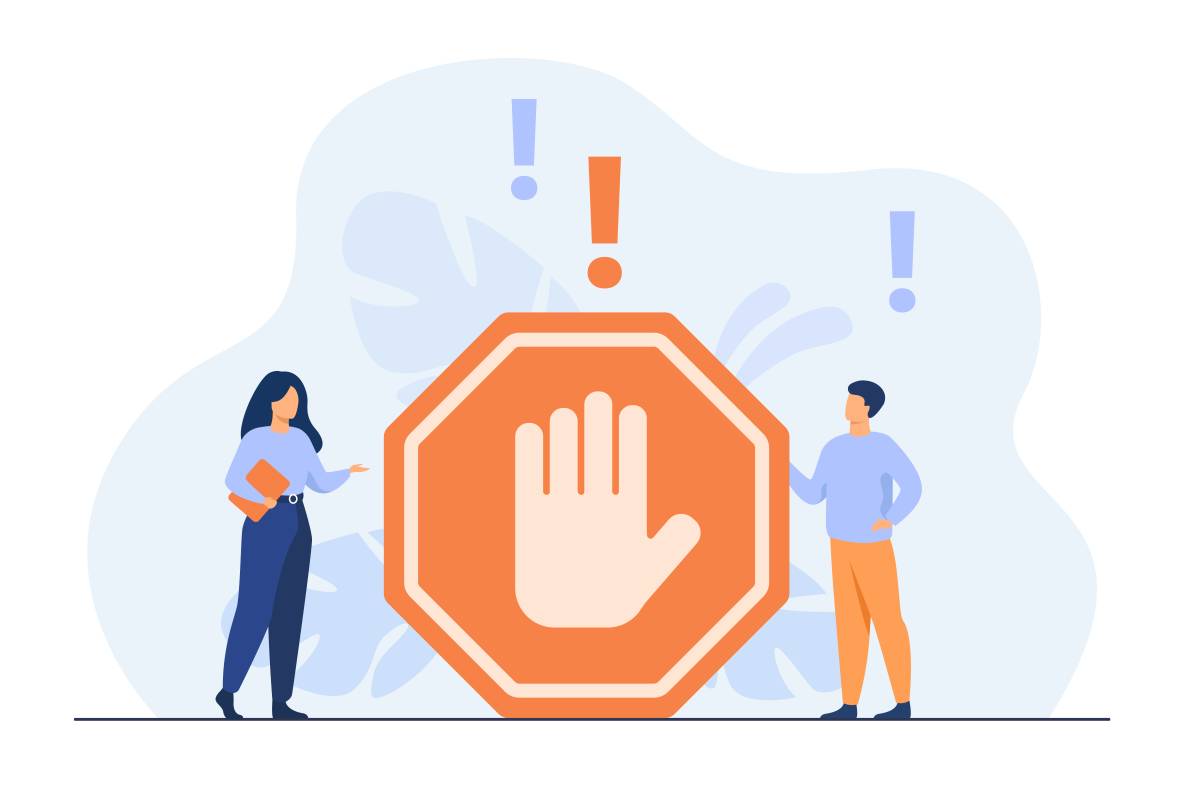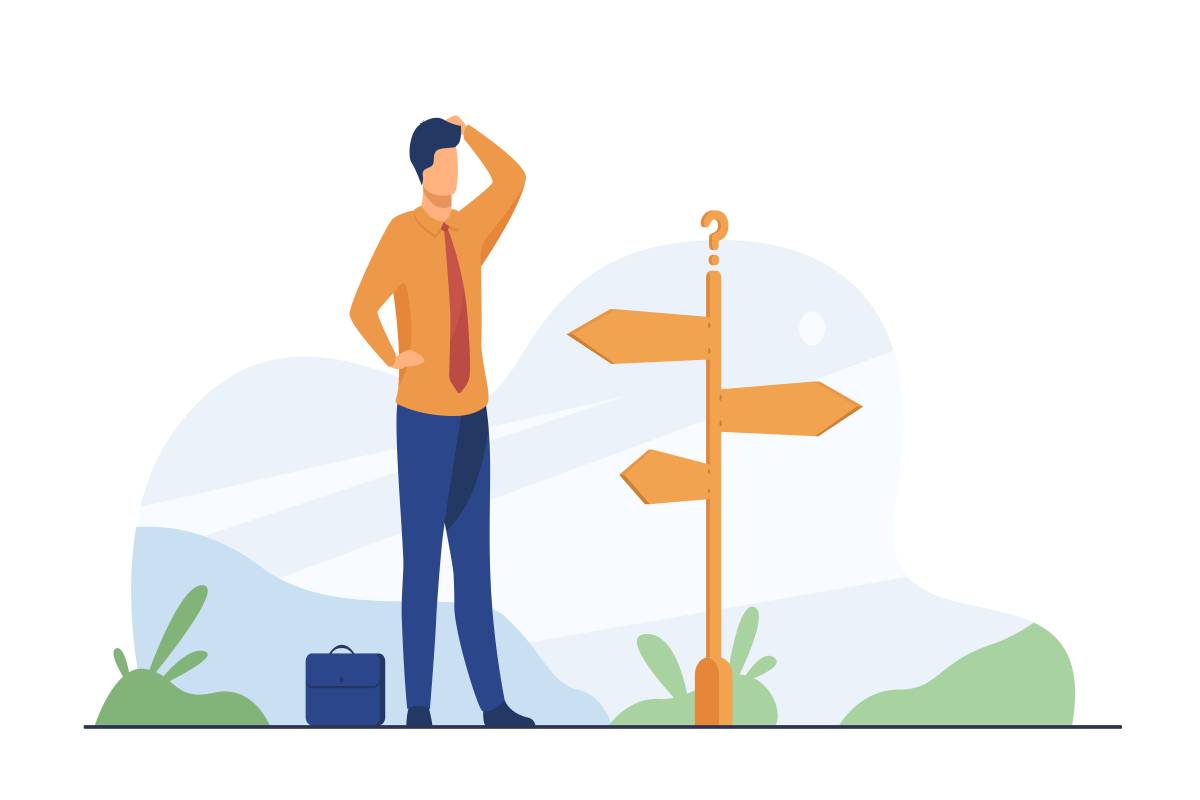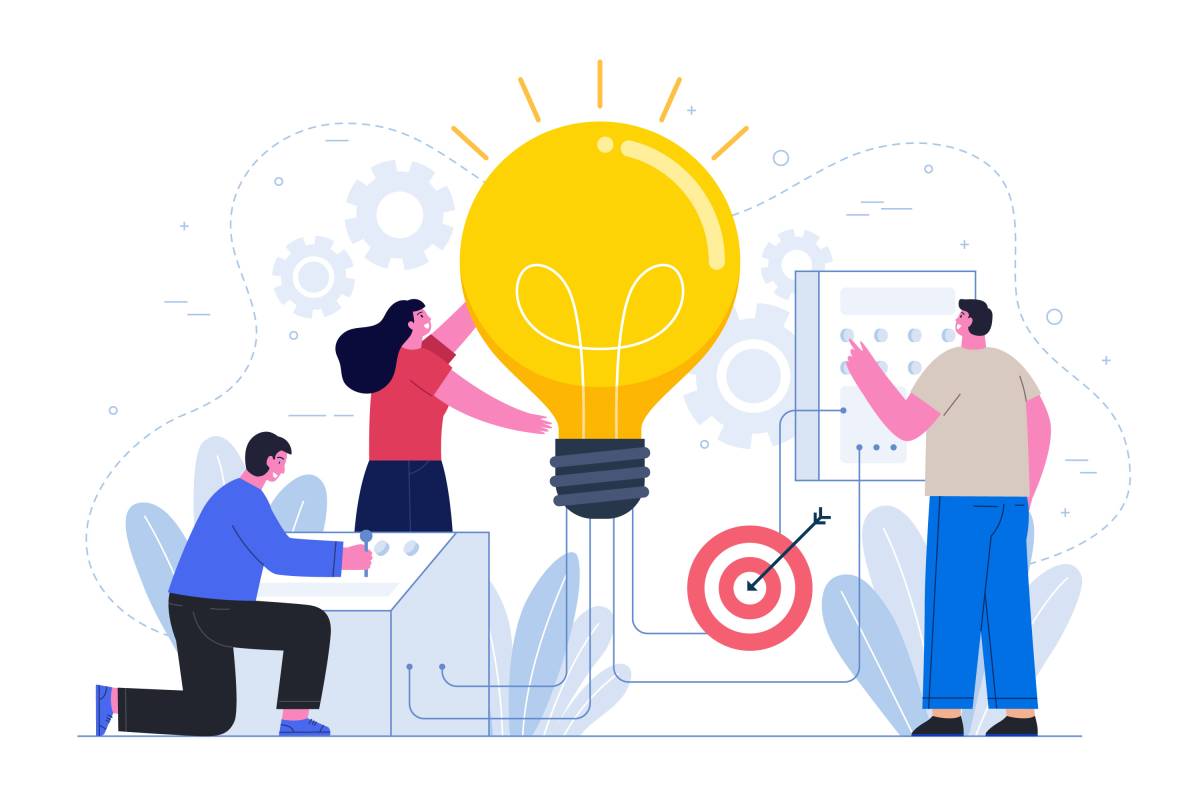When people talk about ‘the good old days’ it’s usually reminiscing about their childhood, thinking about the time they lived in a particular city or house, or or fondly considering a period in their lives when they felt more carefree, had more fun, or felt more optimistic. The ‘good old days’ differ for everyone.
Except for Meta advertisers. When advertisers including Shopify merchants talk about ‘the good old days’, it is guaranteed that they're referring to the days before June 2021...the release month for the Apple iOS 14.5 update. How can we be so sure? Well…
 Image by pch.vector on Freepik
Image by pch.vector on Freepik
What was the iOS 14.5 update?
The iOS 14.5 update was an iOS update which included the following statement
apps are required to ask your permission when they want to track you across apps and websites owned by other companies
The explanation was that it was designed to protect user privacy.
Simply put, every iPhone user would be served a prompt for every app, including Facebook and Instagram, and they could choose to allow - or refuse - their website activity to be tracked by the app.
It was expected that people would opt out, which is exactly what most did, and still do to this day. Statista suggests that between 14% and 25% of people have opted in to tracking from June 2021-April 2022.
Whilst globally, Android typically holds the highest market share compared to iOS, some countries such as the UK, the US and Australia either have a fairly equal split in terms of device users, or iOS holds a higher share in those markets.

So how does this affect my Meta advertising for my Shopify business?
Basically, if your Meta audience is split fairly equally across Android and iOS users, and if, as it’s shown by the stats, 75% of your users have then opted out of tracking, your trackable audience size has decreased by more than a quarter of your total audience. If your audience is split 90% iOS to 10% Android, you’ve lost far more than half.
This means that all the things this specific opt-out portion of your audience does on your Shopify site, such as adding to cart, making purchases, and spending money, can’t be tracked and shared with Facebook as it was previously, which means lower attributed results to the platform.
Additionally, with less data being captured, the platform finds it more difficult to effectively reach and engage consumers with your ads, as it doesn’t necessarily know what stage of the buying journey they are in or how interested they are in your product. Acquisitional audiences are now lacking in terms of shared data points and remarketing audiences are much smaller.
This leads to difficulty for advertisers when measuring performance, deciding on budgets, and planning an efficient strategy.
 Image by pch.vector on Freepik
Image by pch.vector on Freepik
So how do I fix this for my advertising?
In short, there’s no quick and easy, one step fix. Meta has released and continues to release updates to support advertisers who are finding things more difficult as a result of the update.
However, there is something we can do ourselves as advertisers when marketing on the platforms. Develop thoughtful strategies, based on an understanding of what is now missing, and common sense. Now, every Shopify business and ecommerce business is different, and different strategies will suit different business models. However, there are some overall concepts you can bear in mind when working to create a strong strategy for your business.
Introducing…
Eastside Co’s two pronged strategy for Meta marketing for Shopify
Since the iOS update, we’ve been working to continually develop considered strategies for Meta marketing, ones that are designed to generate the highest levels of revenue possible for our clients, but also ones that are designed to offer as much added overall marketing benefit to our clients too.
The Two Pronged Strategy is designed to support ad accounts following the iOS update, by both working to generate revenue, but also to sync Meta advertising with other aligned marketing efforts, creating a holistic approach to business revenue generation and growth.
Growth Prong
This aspect of the strategy is vital for long term account growth, and is primarily suitable for a new ad account, a long term dormant ad account, or a low activity/budget ad account which has had low levels of effective activity run. For a high performance ad account, this is less important, however will offer value to the business overall and support performance of the ad account in the longer term.
The key aspect of this strategy is that it is not designed to directly generate sales, however it will deliver general growth for both the Facebook ad account and should also work to drive increased revenue for the wider business overall by nurturing consumers effectively. The benefit of this strategy for Facebook directly is that this activity should help to maximise sales and return on ad spend (ROAS) for the platform itself in the longer term as consumers become more familiar with your Shopify brand.
 Image by pch.vector on Freepik
Image by pch.vector on Freepik
The importance of this type of growth has been fuelled due to Facebook’s requirement to adhere to the privacy controls of iOS 14. As a result of the update, Facebook accounts across every industry and in every country experienced decreases in key remarketing audience sizes and a decreased ability to track and report on conversion activity types on websites.
Therefore, delivering activity designed to effectively warm up colder consumers, build and strengthen key remarketing audiences, and provide support to other tactics which in turn provide support to paid social, are key to driving higher levels of success in paid social media marketing in both the short and long term.
The delivered campaigns should activate the channel as a ‘gateway to nurture’, placing consumers in different places of their choice where they choose to be exposed to ongoing content.
This would include campaigns such as
- email lead generation
- SMS lead generation
- Facebook page like
- Instagram follow
- awareness focused
Once the consumer has chosen to follow the Facebook page for example, or sign up to receive emails, these consumers can then be nurtured ongoing via delivered content to their feed or inbox. This should firstly support the revenue generation for these aligned tactics (such as additional purchases in the Meta shops or purchases as a result of email marketing), which generates overall business revenue.
The additional benefit to this type of activity is that once these consumers are nurtured via these channels, tailored high intent audiences, such as email segments of users who have been served specific flows, or audiences who have interacted with the organic profile posts, can then be used in Meta paid advertising efforts to deliver tailored campaigns to to increase the likelihood of generating purchases via Meta paid ads. This strategy prong benefits the aligned marketing efforts in the short term and Meta advertising efforts in the long term.
Meta paid advertising is of course aligned with Meta organic channels already, and can easily be integrated with a wide variety of email service providers, such as Klaviyo and Omnisend too.
Conversion Prong
This aspect of the strategy, which is typically the main focus of paid social marketing, is to generate conversions on the channel.
We already see how this activity can be supported by the growth prong campaigns and subsequent nurturing of consumers on other channels to create high intent audience segments.
However, that should not be the only strategy for generating conversions on the platform. Despite the iOS update effects, and the decreased audience levels Meta is able to effectively market to and track results from, there are still plenty of opportunities to drive conversions directly on the platform.
Development and refinement of an effective customer journey model from acquisition to purchase and retention, should work to develop loyal enthusiasts of your brand via paid social efforts alone.
When brand awareness campaigns are delivered as part of the growth strategy, working to increase consumer touchpoint frequency (the amount of times someone usually has to see something about your Shopify brand before they’re inclined to buy something), this can then be built upon for the conversions focused aspect of the strategy, with traffic campaigns initially designed to drive people to your website to perform key actions such as viewing content, adding to cart, initiating checkout or purchasing.
This helps to increase important pixel data (which is in much, much shorter supply following the iOS update). The more pixel data and browsing behavior records Meta has, the more the platform can understand how your audience members behave and whether they’re likely to perform a specific desired action such as purchase.
Pixel data also helps the advertising platform find users who are the most behaviourally similar to your current purchasers, based on a multitude of data points. So, the more data you have (as long as it is relevant consumers driven by appropriately tailored traffic campaigns), the better for your ongoing ad account performance, especially where the conversion focused prong of the strategy is concerned.
As data collection progresses, conversion campaigns should be optimised for four different tier positions in the consumer buying journey, targeting a variety of cold, warm, hot and loyal advocate audience types, such as saved interest based audiences, lookalike audiences, re engagement audiences and remarketing audiences, with tailored messaging to each.
The tier positions are:
- acquisition (cold consumers)
- re-engage (warm consumers)
- remarket (hot consumers)
- repurchase (loyal advocates)
A consistent approach of conversion campaigns focused to each tier level should be effective in working both to generate conversions from consumers at all levels of the funnel, and to support the fueling of qualified consumers who move through the funnel - for example from a cold consumer who purchases, to a super hot consumer who will likely repurchase. Or a cold consumer who visits your website, to a hot consumer who can be remarketed to. The growth campaign, working alongside this, also helps to feed the audiences needed for re-engagement and remarketing activity.
Is that happily ever after for my Meta marketing then?
It depends. Delivering activity designed to effectively warm up colder consumers, build and strengthen key remarketing audiences, and provide support to other tactics which in turn provide support to paid social, is key to driving higher levels of success in paid social media marketing in both the short and long term, but it shouldn’t be the final point on your journey. You want to scale and bring in even more revenue, right?
As we mentioned previously in this article, the best way to create a strong strategy for your Shopify store is to find a strategy that works for your business. By all means, use this foundation strategy as a kick off point to drive growth for your paid social marketing. But after that, it’s a case of testing, reviewing results, testing, reviewing results, testing, reviewing results, and so on until infinity.
Social media platforms are always changing, and you should always be tweaking, refining, and working to scale, as well as keeping an eye on updates, news and info to ensure you’re making your campaigns better and better, and bringing in more and more revenue to your Shopify store.
If you need support setting up, running and optimising your Meta advertising, why not get in touch and have a chat with our team of experts?



